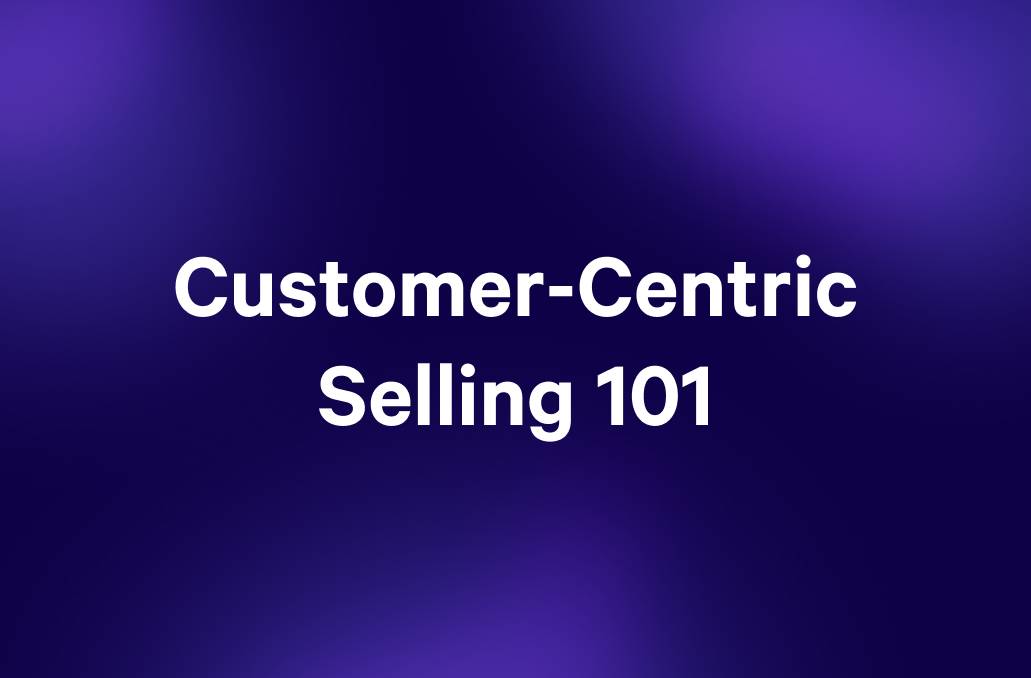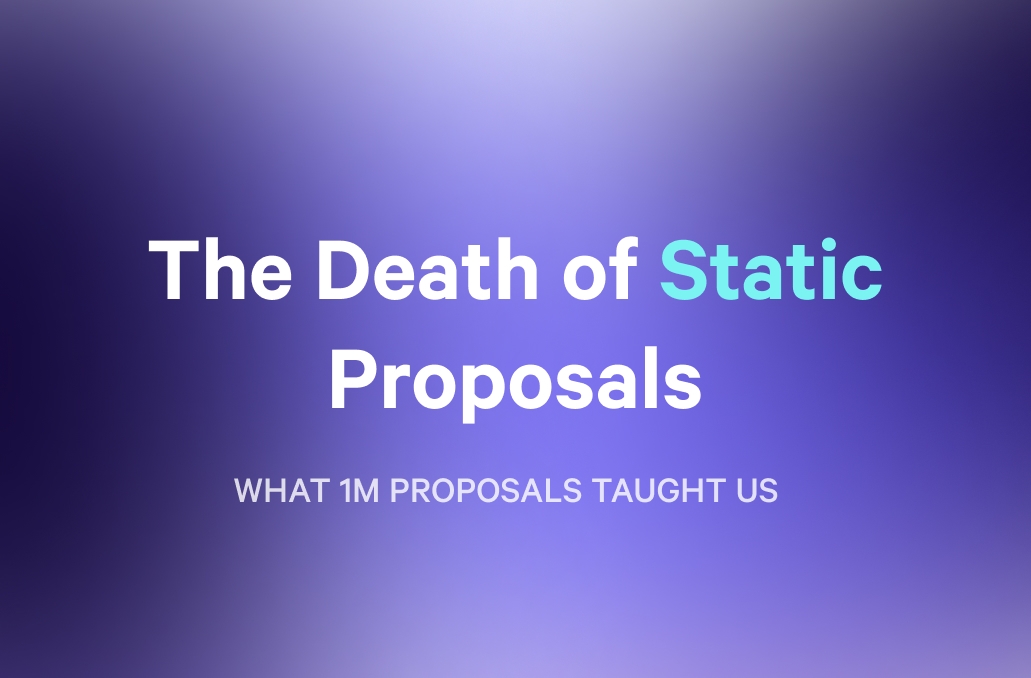Have you ever stopped to consider the real engine behind your business growth? It's not just the product you sell but the success your customers experience with it. That's where a solid Customer Success Strategy comes into play.
But why focus on customer success when you already have so many moving parts on your own side to consider? Because it's not just about making a sale; it's about fostering an environment where customers achieve their goals through your product, leading to loyalty and, ultimately, advocacy for your brand.
In short, when they win, you win.
In this article, we will explore what a Customer Success Strategy means, why it's critical for your business, and how you can craft one that doesn't just meet expectations but exceeds them.
What is a customer success strategy (and why does it matter?)
Think of a Customer Success Strategy as your game plan for ensuring customers get the value they signed up for when they chose your product or service. It’s about actively guiding them to those "aha" moments that lead to a better customer experience, deeper engagement, and long-term loyalty.
In many organizations, this strategy is led by an account management team with designated managers assigned to customers to provide support and ensure desired outcomes across the customer lifecycle.
A customer success strategy might include regular follow up to share information on new functionality or services and check-in to ensure you have happy customers. It can also help be a link between the customer and the sales team. The customer success or account manager might communicate with the sales team to ensure they prioritize opportunities for upselling or cross-selling with customers who are open to it.
Why does having a customer success strategy matter so much?
Because in today’s world, products are plentiful, and patience is scarce. The customer experience has never been so important. To quantify its significance, 88% of customers now say it is as important as the product or service itself!
Customers have options, and if they don’t see value quickly, they’ll move on. There is a world of competition only ever a mouse click away. A customer success strategy is your best defense against this type of churn. The kind of customer engagement you get by having a well-defined customer success strategy turns customers into champions of your brand. And when customers are winning, they stick around, spend more, and tell their friends.
Although this concept was popularised by the SaaS industry where customer retention, renewals, and lifetime value are so critical, other sectors have been quick to adopt it, too. It’s a holistic approach to customer relationships revolving around big-picture thinking, and proactively addressing customer pain points to increase customer loyalty. This can also lead to better retention rates, positive word-of-mouth, and more referrals all feeding into a virtuous cycle of growth for your business.
In an increasingly customer-centric world, a success strategy should no longer be an afterthought but a foundational part of your sales process.
Core components of an effective customer success strategy
An effective customer success strategy isn’t one-size-fits-all, but there are a few key components that are universally essential. These include:
1. In-depth customer onboarding
First impressions are lasting. A meticulously planned onboarding process is the cornerstone of your customer's journey. It begins with personalized welcome messages that resonate with the customer’s expectations. From there, guide them through a carefully crafted onboarding sequence that includes not just tutorials but also hands-on demonstrations and one-to-one sessions (if applicable).
Ensure that the onboarding process addresses the common queries new users may have and proactively provides solutions. It's also about setting the right pace—neither overwhelming the customer with information overload nor leaving them feeling under-supported. Effective onboarding is a delicate balance that, when achieved, sets the tone for a trusting and mutually beneficial relationship.
2. Setting goals and milestones
It's crucial to define and align on what 'success' means for your customers, which may vary widely across different user segments.
Start with a clear understanding of their business objectives, and collaboratively set SMART (Specific, Measurable, Achievable, Relevant, Time-bound) goals. Establishing milestones that lead to those objectives can serve as motivation and a road map for your customers. Celebrate these milestones publicly when appropriate—whether through highlighting customer stories or recognizing their achievements in community forums. This not only encourages your customers but also shows prospects the tangible benefits your product can deliver.
3. Consistent and meaningful communication
Building a solid communication cadence is a must. Determine the frequency and channels that best suit different customer segments—some may prefer a bi-weekly newsletter, others might benefit from a monthly video check-in.
It’s not just about updates and check-ins; it’s about providing value in each interaction. Share insights, industry news, or tips tailored to their use case. Use communication to educate customers about features they may not utilize fully and to keep them aware of how your service is evolving to meet their needs.
4. Robust feedback Loops
Effective feedback loops are a two-way street. They're not just about collecting feedback but also about acting on it and closing the loop with customers. Implement easy-to-use feedback channels, like in-app surveys or quick polls, in your newsletters.
When feedback is received, acknowledge it, thank the customer, and, where appropriate, share the roadmap for implementing their suggestions. When changes are made based on customer input, tell them. It lets them know their voice has an impact. This transparency builds trust and shows customers that they play an active role in shaping your product or service.
5. Comprehensive educational resources
Education is the most empowering tool you can provide to ensure customer success. Develop a rich library of resources that cater to various learning styles and expertise levels. In-depth webinars that tackle common challenges.
Step-by-step tutorials for self-service learning. An extensive FAQ section addressing the typical (and not-so-typical!) questions that arise can be useful too. Keep these resources updated and easily accessible, and consider personalizing content to different segments of your user base.
6. Dynamic community building
A sense of community can be a powerful force in customer success. Develop an online forum where customers can interact, share best practices, and offer solutions. Organize regular virtual meetups or Q&A sessions with product experts to engage the community.
Gamify the experience with rewards for community contributions to encourage participation. By fostering a strong user community, you provide a platform for customers to learn from each other, which can often be more relatable and persuasive than company-driven communication.
7. Data-driven decisions
Data is the compass that guides your customer success strategy. Use analytics tools to track how customers use your product and where any friction could occur. Monitor customer health scores that factor in product usage frequency, support ticket trends, and NPS (Net Promoter Score) feedback.
Apply machine learning models to predict future customer behavior and identify areas for improvement. Empower your customer success managers with these insights so they can make informed, strategic decisions tailored to each customer's unique journey.
Customer success management (CSM) tools are common solutions that provide a unified platform that connects customer data with CRM for complete visibility and helps you track how customers use your product and where any friction could occur. There are tons of options including HubSpot, ChurnZero, and more.
By enhancing these components of your Customer Success Strategy with detailed actions and a thoughtful approach, you position your business not just as a vendor but as a partner invested in your customers' success—and as they grow, so does your business.
Steps to building a robust customer success strategy
Building a Customer Success Strategy that really moves the needle involves several strategic steps.
1. Defining customer-centric success metrics
To truly define success, you need to get under the skin of your customer's business. Conduct thorough customer interviews to understand their business model, market challenges, and how they measure success.
With this insight, develop a tailored set of success metrics that resonate with their objectives. This might include increased revenue, improved customer retention rates, or enhanced productivity. By aligning your metrics with their outcomes, you ensure that your service is an integral part of their success story.
2. Comprehensive customer journey mapping
To effectively map the customer journey, you need to view it from the customer's perspective. This involves identifying not just touch points but also the emotional highs and lows the customer experiences along the way.
Collaborate with cross-functional teams to gather insights and identify where customers feel most engaged or at risk of churning. Then, use this map to create 'moments of delight'—unexpected positive experiences that exceed customer expectations, like personalized advice or rewards for product milestones.
3. Strategic engagement planning
Once the journey is mapped, create a detailed engagement plan that outlines how you'll support customers at each point. Determine the frequency of check-ins, the type of content that will be shared, and the channels used.
Tailoring the mode of communication to fit the customer’s preferences is key; some may prefer a monthly video call, while others might respond better to a weekly email roundup. The plan should be flexible enough to adapt to changing customer needs and feedback.
4. Cultivating a skilled customer success team
The right customer success team is your frontline, brand ambassadors, and sometimes even product troubleshooters. They need a mix of soft skills like empathy and communication and a robust understanding of your product to guide customers effectively.
Invest in their continuous learning by providing regular training sessions on both product features and soft skills. Empower them to build real connections with customers, turning support scenarios into opportunities for relationship-building. Recognize and reward team members who go above and beyond, fostering an environment that values customer success as a key driver of business growth.
5. Strategic investment in customer success tools
Leverage technology to amplify your customer success capabilities. This goes beyond a traditional CRM; it's about a holistic stack that includes advanced analytics for tracking user engagement, automated customer feedback systems to capture real-time sentiments, and perhaps even AI-driven tools that can predict customer behavior or needs.
These tools should not operate in silos but work together to provide a 360-degree view of the customer, enabling personalized interactions at scale.
6. Dynamic monitoring and agile adaptation
Building an effective customer success strategy isn't a 'set it and forget it' scenario—it's a living process. Establish a dashboard that tracks key performance indicators like customer health scores, which account for usage patterns, customer support interactions, and satisfaction ratings.
Regularly review these metrics and be prepared to iterate on your strategy. Encourage a feedback loop within your team to discuss what's working and what's not, and have the flexibility to pivot your approach in response to these insights.
7. Cultivating a customer-centric culture across the company
Customer success is not just the responsibility of one department; it's a company-wide ethos. Embed customer success into the DNA of your company by ensuring every employee understands how their role impacts the customer experience. From the engineers who shape the product to the marketers who tell its story, each team should have clear objectives linked to customer outcomes. This integrated approach ensures that customer success is considered at every stage of decision-making, from product development to sales tactics.
By expanding on these steps, you provide a framework for sales leaders not only to understand but also to implement a comprehensive strategy that is tailored, dynamic, and customer-focused.
Challenges in implementing customer success strategy
Implementing a customer success strategy comes with its own set of challenges. Identifying and planning ways to overcome these hurdles is critical- “forewarned is forearmed”! Let’s look at some common challenges and proactive measures to address them.
Aligning cross-departmental goals
One of the primary challenges is ensuring that the customer success vision is shared across all departments. Often, teams operate in silos, with goals that may not directly align with customer success metrics. Breaking down these silos and aligning goals across product development, sales, marketing, and support teams can be daunting but is necessary for a cohesive strategy.
Solution: Facilitate regular interdepartmental meetings and establish shared KPIs related to customer success outcomes. Promote open communication channels and encourage different teams to work on joint projects focused on customer-centric objectives.
Data overload
With abundant customer data available, it can be overwhelming to determine what should be tracked and measured. This can easily lead to analysis paralysis… The challenge lies in filtering out noise and focusing on actionable data that truly impacts customer success.
Solution: Invest in analytics platforms that can sift through data to provide relevant insights. Educate your team on identifying key data points that align with customer success objectives.
Personalization at scale
As your customer base grows, providing a personalized experience to each customer becomes increasingly difficult. The challenge is to maintain the high standard of a tailored experience without compromising efficiency.
Solution: Leverage technology like AI and machine learning to analyze customer data and predict needs, allowing you to automate personalized interactions. Develop customer segmentation strategies to tailor your communication and resources more effectively.
Measuring the intangible
Some aspects of customer success, such as customer sentiment or loyalty, are difficult to quantify, making it challenging to measure the ROI of your customer success initiatives.
Solution: Incorporate qualitative data into your evaluation. Use surveys, NPS scores, and customer interviews to gather insights into the customer’s emotional journey and correlate this with retention and upsell rates.
By recognizing and addressing these challenges head-on, you can build a resilient customer success strategy that stands the test of time and lays the foundation for sustained growth.
The role of technology in enhancing customer success strategy
In an era where the customer experience can be the differentiator between companies, technology is not just an enabler; it's a catalyst for customer success. Here's how technology can significantly enhance your strategy:
Automated customer interactions: Time is a precious commodity. Technology allows for the automation of routine customer interactions without losing the personal touch. Chatbots, AI-driven emails, and customer self-service portals can provide instant support and answers to common questions, freeing your team to focus on more complex issues.
Predictive analytics: Imagine knowing what your customers need before they do. Predictive analytics can analyze customer data to forecast future behaviors, enabling proactive measures. This could mean identifying at-risk customers who might churn and engaging them with retention strategies before they leave.
Personalized experiences at scale: Technology has democratized personalization. It's now possible to tailor the customer experience individually, even with thousands of customers. The best sales tools and CRM systems can segment customers based on behavior, allowing you to personalize messages, offers, and support based on these segments.
Enhanced customer insight: Modern analytics tools offer deep dives into customer usage patterns, engagement levels, and satisfaction. These insights can drive strategy, allowing you to make informed decisions about product development, marketing strategies, and customer success initiatives.
Integration capabilities: The best technology stacks play well with others. Integration capabilities mean that your customer success tools can connect with other systems like your CRM, helpdesk, and even product databases, providing a unified view of the customer across your organization.
Scalability: As your business grows, so does your customer base. Technology solutions are inherently scalable, growing with you and enabling consistent customer success practices regardless of the number of customers you serve.
Real-Time feedback and resolution: Instant feedback systems allow customers to express their satisfaction or frustrations in real-time, and technology can help you act on that feedback quickly, often preempting more significant issues.
Self-service empowerment: Virtually 100% of customers want to self-serve all (or part) of the buyer journey. Providing a robust knowledge base, how-to guides, and forums powered by technology empowers customers to find solutions without direct intervention, enhancing satisfaction.
Technology not only supports but significantly amplifies the impact of a customer success strategy. By harnessing the power of technology, companies can anticipate needs, personalize interactions, and continuously evolve their strategy to serve customers better.
How can Qwilr complement your customer success strategy?
In addition to creating robust proposals and other sales content, Qwilr can also help elevate your customer success strategy. We do this by supporting:
- Onboarding: Streamline your welcome process with Qwilr's engaging, brand-centric onboarding materials.
- Aligning goals & milestones: Use Qwilr to present clear, visually engaging success roadmaps for customers.
- Facilitating effective communication: Keep in touch with well-designed newsletters and reports that inform and captivate.
- Enabling feedback: Demonstrate responsive changes with Qwilr's interactive documents, underpinned by insightful analytics.
- Providing educational content: Craft educational content with Qwilr that's as interactive as it is informative.
- Building community: Build a community with customer stories and testimonials shared through Qwilr.
- Data-driven strategies: Refine your approach with the robust data insights Qwilr provides on customer interactions.
Qwilr isn't just about documents; it's a proposal tool that complements every step of your customer success plan, enhancing experiences and outcomes throughout.
Check out our library of free proposal templates, or book a demo today.
FAQs
What are the 3 Ps of exceptional customer experience?
- People: Exceptional customer experience is driven by people who are empathetic, skilled, and genuinely committed to helping customers succeed.
- Product: Your product or service must deliver on its promises and meet the needs of your customers. It should be reliable, user-friendly, and continuously evolving based on customer feedback and market demands.
- Process: Efficient, clear, and customer-friendly processes ensure that interactions are seamless, issues are quickly resolved, and the overall experience is smooth and enjoyable for the customer.
How do you measure the success of a customer success strategy?
Metrics such as customer retention rates, Net Promoter Scores (NPS), customer satisfaction (CSAT) scores, customer lifetime value (CLV), and customer churn rates are key indicators. Monitoring these figures helps gauge the effectiveness of your customer success efforts.
Can small businesses implement a robust customer success strategy without a large budget?
Yes, they can. It's about leveraging strengths like personalized attention and understanding customers intimately. Utilizing cost-effective tools like Qwilr can enable small businesses to create impactful, professional-grade customer communications.
How often should you review and update your customer success strategy?
Regular evaluations, like quarterly or bi-annual reviews, are recommended. This ensures that your customer success strategy adapts to evolving customer expectations and business objectives.
Final thoughts
Remember, your strategy should evolve as your business grows and customer needs shift. It's not about a set-and-forget policy but a dynamic, responsive approach that keeps the dialogue with your customers open and your business adaptable.
Consider this blog not as the end but as a jumping-off point for your customer success journey. There's always more to learn, more to improve, and more opportunities to make a customer smile. And isn't that what we're all here for?
Try Qwilr for free today to see how it can help you delight and deliver for your customers.
About the author

Marissa Taffer|Founder & President of M. Taffer Consulting
Marissa Taffer is the Founder & President of M. Taffer Consulting. She brings over 15 years of sales and marketing experience across various industries to a broad range of clients.



